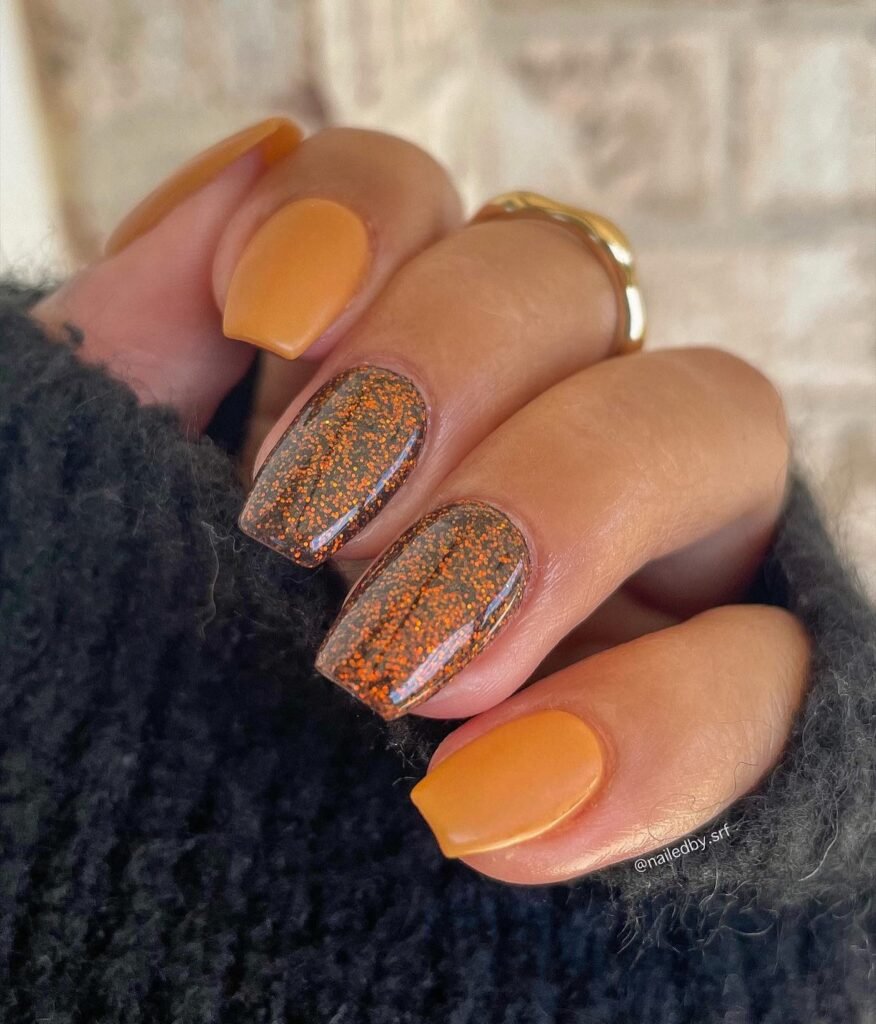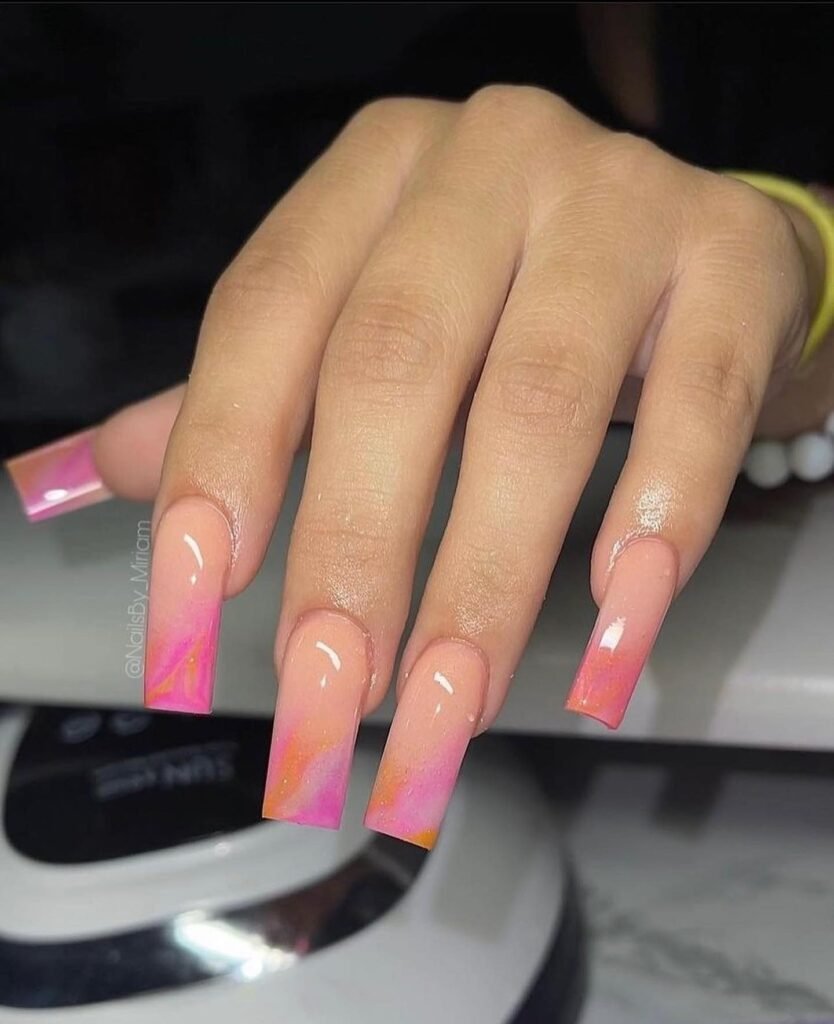When we think about manicures and making our nails beautiful, our first two options are usually gel and acrylics. Given the wide range of nail aesthetic options, there is room for more creativity. The more choices you have, the better; expanding your ideas gives you more options for your nails. You may never know how much you like a thing if you haven’t tried it.
Regardless of the type of manicure, you’ll probably want it to last throughout all the outfits and events you have planned. Acrylic and dip nails are two of the best options for long-lasting manicures. But they also differ in many ways. Keep reading to learn more.
Dip Vs. Acrylic – Overview

Dip Nails
Even though dip nails aren’t quite the trend, they have become more popular than they used to be, especially due to the current social media nail aesthetic trend. Everyone is trying something new now and having fun with it.
Dip nails, also known as Signature Nail System or SNS manicures, are achieved by either dipping the nail in colored powder or brushing dip powder over it until it reaches desired thickness. They lie somewhere between a classic manicure and acrylic nails.

After applying a base coat, your nails are dipped into a powder jar. The powder is usually the color you have chosen for your manicure. Afterwards, a topcoat is applied as a standard for the manicure. The process must be repeated at least twice to achieve the desired pigment.
Although most mobile beauty therapists prefer to apply the powder straight to the nail using a brush, this method is recommended in salons due to hygiene implementations. While the dipping can be extremely satisfying to watch, there’s always the risk of contracting a bacterial infection from another customer.
They are pretty hard and should last about a month without chipping.
Acrylic Nails
Acrylic nails are one of the most common forms of manicures, as they have been around for ages. Acrylic nails are made up of powder and liquid monomers. This mixture is applied to the natural nail using a brush to shape it. The nails are then left to air dry. Acrylic nails don’t require an LED lamp to dry unless they are gel acrylics.

After that, the nail technician can shape, file, and polish your acrylic nails to your preference.
The nail technician may use tips to lengthen the nails if you want a style longer than your natural nails. It depends on you and what you’re going for.
Differences Between Dip and Acrylic
At first glance, it might be difficult to discern the difference between acrylic nails and those produced using the powder dip technique.
Both feature gorgeous designs, look fantastic, and can enhance the growth of your short nails. Unless you know how it was done, it can be difficult to discern the difference when either sort of manicure is finished.
That’s about where the similarities end. How to dip and acrylics are made where the differences come in. Although acrylic and dip powder nails look identical, they have key differences. Despite their differences, both types of manicures will ultimately result in beautiful, durable nails.
Lasts Longer
Usually, acrylic nails tend to be more durable and long-lasting in comparison to Dip Powder. But this highly depends on the brand and your daily activities, i.e., how you use your hands after the nails are done.
The lifetime of dip nails is one of their main benefits. While acrylic nails often only last two to three weeks before requiring a touch-up by a nail tech, dip nails usually last up to four weeks.
How to Make your Nails Last Longer
Even both dip manicures and acrylic manicures both outlast ordinary nail paint. You can still do a few more actions to extend your gorgeous nails’ life properly. The following tips can help your nails stay longer:
Put on gloves when cleaning dishes or performing other manual labor.
Picking a nail form and length that won’t break as quickly is something to think about. Make sure to pick a nail length and shape that go well with your lifestyle from the wide variety available.
Application Process
With Dip powder, the nails get a liquid base coat, are brushed with colored powder, then coated with a clear protective polish. The process must be repeated at least twice to achieve the desired pigment.
While with acrylic, the nails are made by combining powder and liquid into a dough-like material, which the nail tech paints onto the nail and molds into the desired shape. Then, the nails are painted and air-dried.
Dip Powder is far faster and easier to apply, allowing you to easily and comfortably DIY it at home or shorten the time you have to spend at a salon.
The main reason Dip Powder is easier and quicker to apply is that it requires less skill since the application process is very straightforward.
On the other hand, Acrylic Application requires some skill and practice, especially getting the liquid to powder ratio correctly.
Removal Process
To remove acrylic nails, it’s best to leave it to a professional technician to avoid harming your nail bed. Go to the salon so a nail technician may trim your nails down and buff the polish. Afterwards, they soak your nails in 100 percent pure acetone to weaken them and push the polish off with a metal cuticle pusher.
With dip powder, a nail technician might use an electric file to remove the top coats of polish to allow the acetone to penetrate the polish more efficiently. Your nails will soak in acetone, like acrylic nails, until the lacquer can be removed or pushed.
Additionally, Dip Powder typically comes off more quickly and easily than acrylic, and because it is easier to remove, it puts less stress and strain on your nails.
Acrylic nails can be particularly difficult to remove since they require a lot of filing and acetone, damaging and drying up your natural nails.
Safer To Use
Compared to other nail enhancements, dip powder nails are the safest. Because dip nails don’t require any stinky acrylic liquid, they won’t fill the space with a foul smell or cause allergies. Instead, it binds the powder together by bonding with a soft resin.
On the other hand, acrylic liquids pose more of a challenge, and they contain materials such as acid primers and liquid monomers with a strong, eye-burning smell that may make it hard to breathe when inhaled.
Cost
Though dip nails are considered more expensive because they aren’t as common as acrylics which are quite common, it is still dependent on many factors. The places you go might charge more depending on what you want to do, but generally, dip powder nails charge more. Even if not considerably more, they charge slightly higher.
Acrylics often cost $35 to $45 on average. A dip powder manicure typically costs from $30 to $50.
Look
Your personal preferences will determine a lot. Due to its lighter weight and more natural feel, powder dip nails are preferred by certain people.
Others enjoy the feel of acrylic nails since you may cut them to any length you like.
Generally, Once you use a good brand and it’s applied correctly, dip Powder feels lighter and more natural than acrylic nails.
Manicure Safety Tips
1. Avoid picking! Although it may be tempting, picking at your manicure causes the lacquer to be lifted, which causes it to peel.
2. Keep your real nails (and hands) moisturized by applying cuticle oil whenever your cuticles look a little dry.
3. Acrylic nails are also a handy tool to stop yourself from chewing your nails.
4. Choose quality nail polish brands for longer-lasting results.
Which Manicure Style Should You Get?
Still, having trouble choosing between acrylic and dipped nails? Traditional acrylic nails can be the manicure for you if you want longer nails with more elaborate patterns and don’t mind making regular appointments to the salon.
A dip powder manicure can be sufficient for you if your nails are shorter than average and patterns aren’t your main interest.
Both styles are fantastic choices if you want a manicure that will last longer than a standard polish manicure. Additionally, since many firms provide nail paint in various formats, you won’t lose out on sampling new trendy nail colors with either dip or acrylic manicures.
